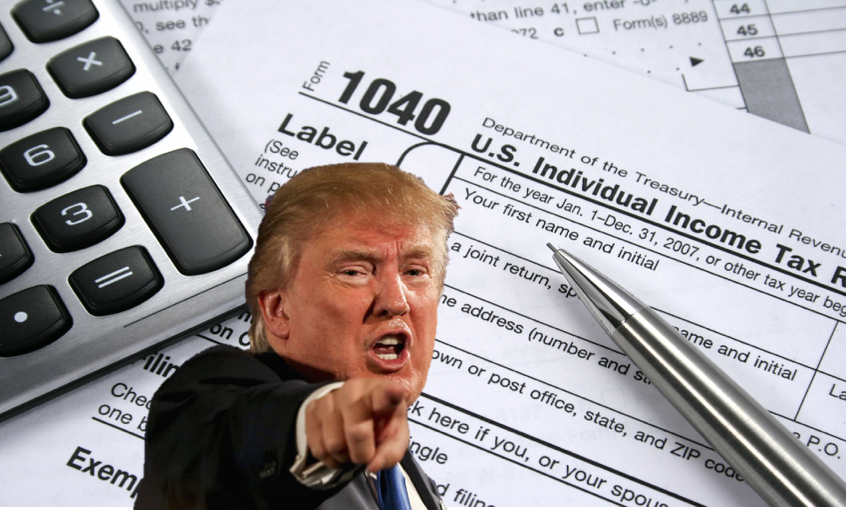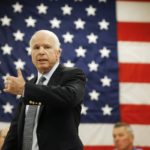LISTEN TO TLR’S LATEST PODCAST:
By Robert Donachie
President Donald Trump is scheduled to meet to discuss tax reform with four key financial and regulatory gurus at 11:15 a.m. at the White House Thursday.
The four tax policy wonks are Chairman of the House Committee on Ways and Means Kevin Brady, top Democrat member of Ways and Means Richie Neal, Senate Committee on Finance Chairman Orrin Hatch, and Oregon Sen. Ron Wyden. All of these legislators are supporters of pro-growth tax plans that lower tax burdens on Americans and regulatory burdens on business. Coupling the Thursday meeting at the White House with top Trump advisor Jared Kushner’s dinner at the Capitol Hill Club Wednesday night with Speaker of the House Paul Ryan, and to outside observers it would appear that reform is gaining major traction in Washington, D.C.
What would a tax reform plan look like?
Whatever tax reform plan makes its way out of Congress will undoubtedly be some amalgam of what Trump, Ryan, and Brady have proposed over the course of the past year. This will include input from congressional Republicans and Democrats.
Ryan and Brady put forth their own tax reform platform called “A Better Way for Tax Reform,” in August, 2016. Trump originally put out his tax reform agenda in summer, 2016, but revised it in September following widespread criticism from the Democrats. (RELATED: A Comprehensive Look At Donald Trump’s Tax Plan)
Both Trump and Ryan wish to make changes to marginal income tax rates, and both men propose lowering rates to the lowest levels since before World War II as well as eliminating four tax brackets, taking the total from seven down to three.
The Trump and Ryan plans would also make it difficult for individuals to benefit from specific deductions, closing often exploited loopholes and increasing the standard deduction limit.
The Trump plan would “increase the standard deduction for joint filers to $30,000, from $12,600, and the standard deduction for single filers will be $15,000. The personal exemptions will be eliminated as will the head-of-household filing status. In addition, the Trump Plan will cap itemized deductions at $200,000 for Married-Joint filers or $100,000 for Single filers,” according to Trump’s campaign website.
Ryan’s plan would alternatively eliminate all deductions except for mortgage interest and charitable gifts, the Wall Street Journal reported.
Trump has vowed to eliminate the estate tax, which he and other Republicans label the “death tax,” and would instead enact taxes on capital gains for the recently deceased. Ryan’s plan flatly abolishes the estate and gift taxes. No formal proposal for gift taxes was included in Trump’s plan.
“The plan has added a provision that would offer manufacturing companies the choice to deduct the full cost of their capital expenses (‘full expensing’) in exchange for no longer being able to deduct net interest payments,” Scott Greenberg, analyst with the Center for Federal Tax Policy at the Tax Foundation, told The Daily Caller News Foundation. Elaborating on his previous point, Greenberg said that some manufacturing companies, likely those with high levels of investment and low debt burdens, “may choose to take advantage of this opportunity to lower their overall tax bill.”
Over the last two years, manufacturing accounted for around 11-12 percent of U.S. GDP. The manufacturing sector reported gains in January, adding 15,000 new jobs. The month of January also marked the fifth consecutive month of employment gains in the manufacturing industry.
Overseas industries would see the most impact from a Trump tax plan, whether or not Congress incorporates all of his suggestions. The president-elect proposes a one-time tax for domestic businesses with trillions of dollars overseas, hoping to incentivize these companies to bring their foreign capital back to the United States.
For small businesses, he plans to promote a separate tax rate that matches the proposed 15 percent corporate tax rate.
Also a key component of the Republican House tax plan is the much discussed border tax adjustment, a term used to describe a tax levied on goods imported and sold in the U.S. Specifically, the tax is aimed at making U.S.-Mexican trade relations more fair, following the “America First,” economic philosophy touted by Trump on the campaign trail.
Obstacles to tax reform
Washington’s lobbying district, known as “K Street,” is actively mobilizing against the proposed border tax adjustment. On the left and the right of the political spectrum, tax reform groups are organizing to kill the border tax, Politico Playbook reports.
Lobbyists are reportedly locking their sights on the Senate, where they believe they have greater potential to influence legislators, as many represent large American-based retail firms that would take a financial hit from an adjustment tax.
One of the Senators meeting with Trump today at the White House, Senate Finance Chairman Orrin Hatch, has raised questions about whether the tax would impose undue burden on U.S. consumers and businesses. Furthermore, the senator questioned whether the border tax adjustment might undermine U.S. international trade policies.
“We don’t have definitive answers to any of those questions at this particular point. And without them, I don’t think I can give definitive positions,” Hatch said in a speech to the U.S. Chamber of Commerce.
Follow Robert on Twitter
Send tips to robert@
Content created by The Daily Caller News Foundation is available without charge to any eligible news publisher that can provide a large audience. For licensing opportunities of our original content, please contact licensing@dailycallernewsfoundation.org.
WATCH TLR’S LATEST VIDEO:





2 comments
… [Trackback]
[…] There you can find 823 additional Info on that Topic: thelibertarianrepublic.com/major-tax-reform-no-longer-just-talk/ […]
… [Trackback]
[…] Info to that Topic: thelibertarianrepublic.com/major-tax-reform-no-longer-just-talk/ […]